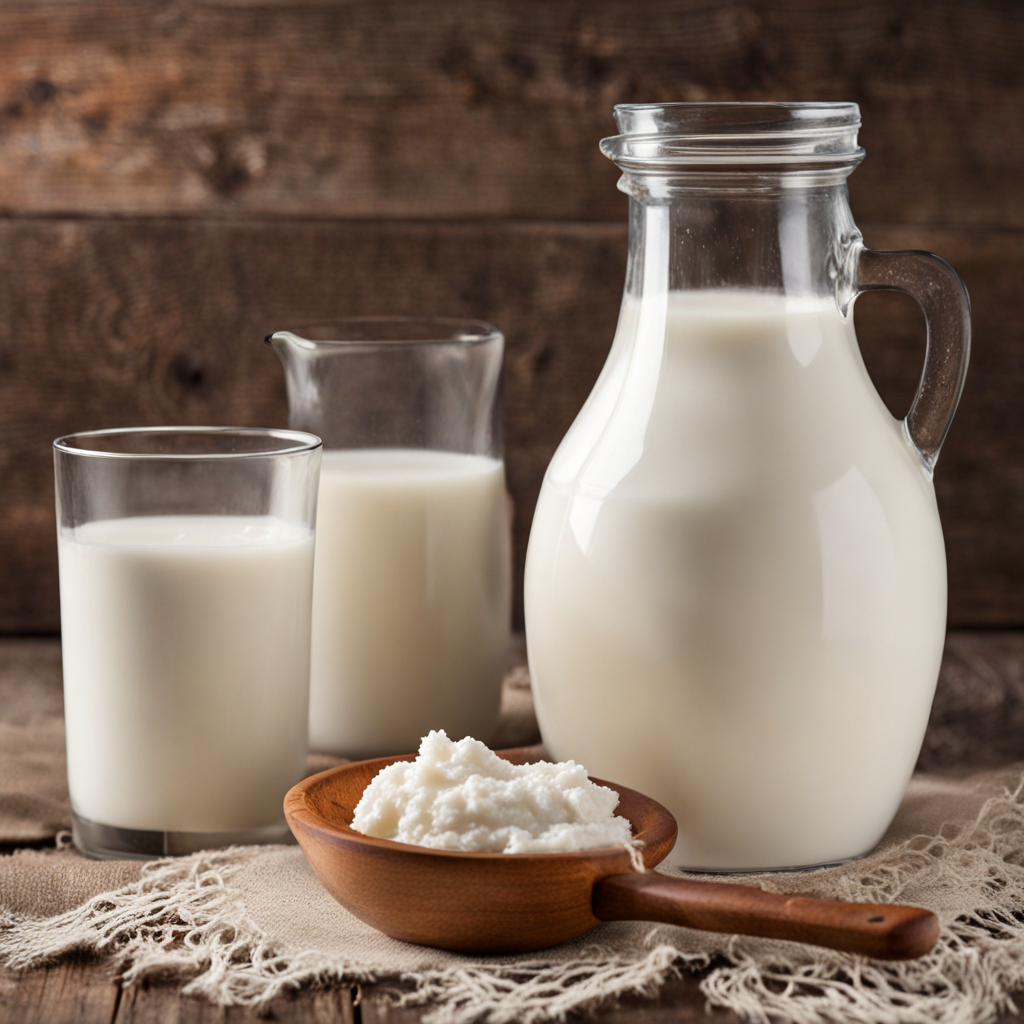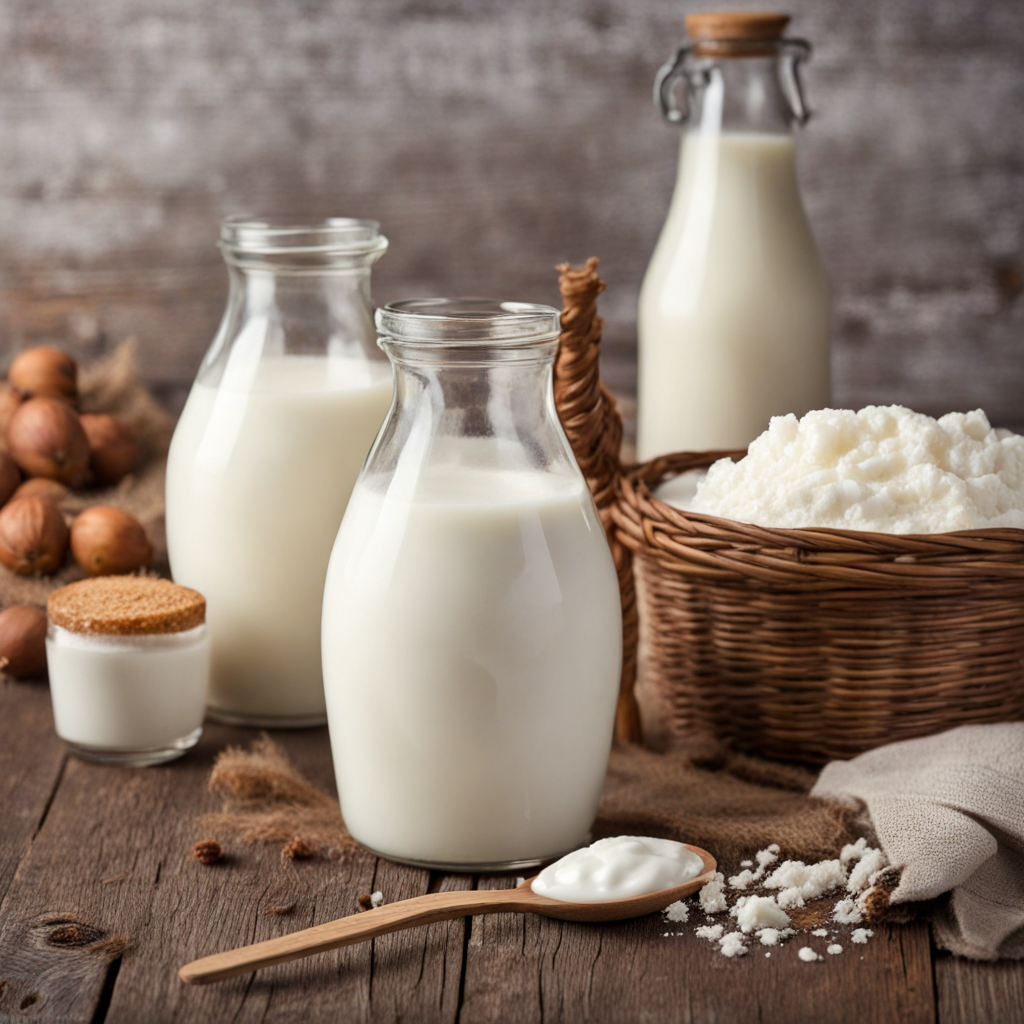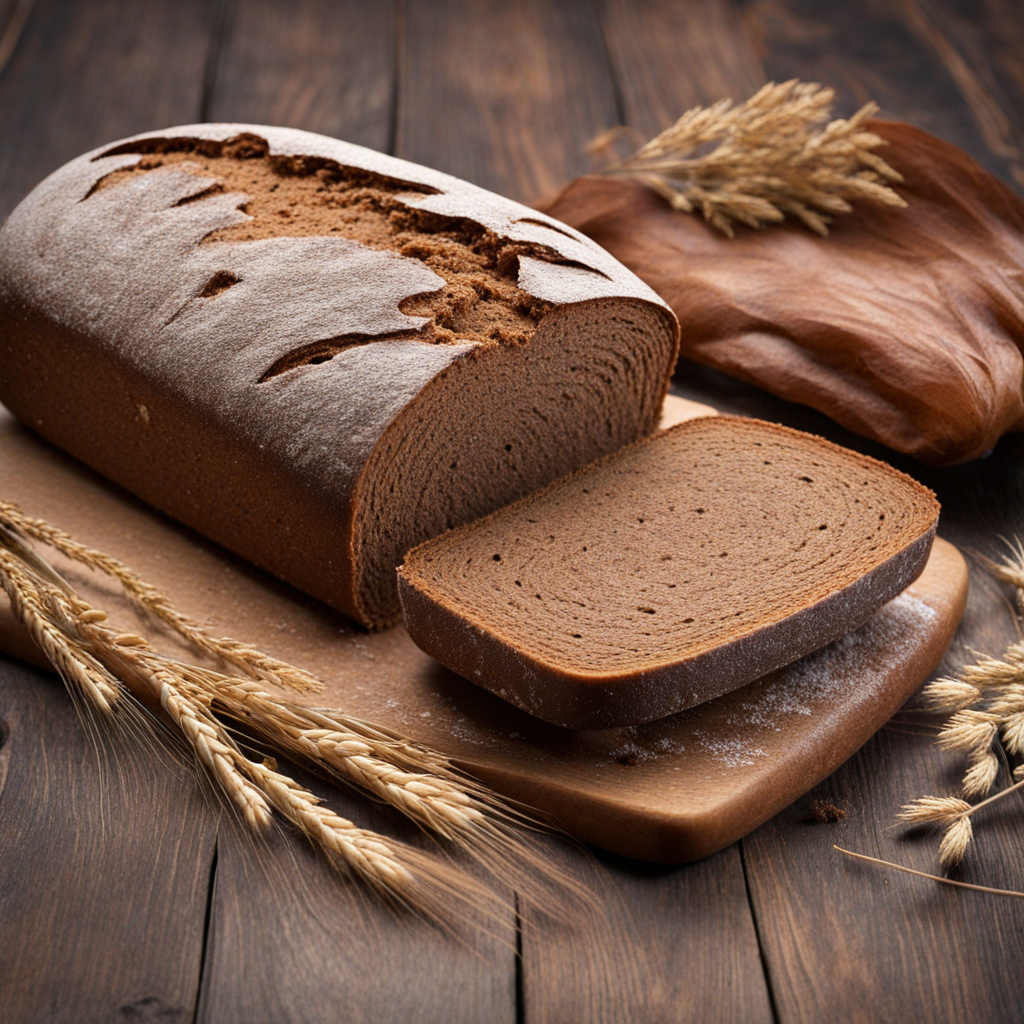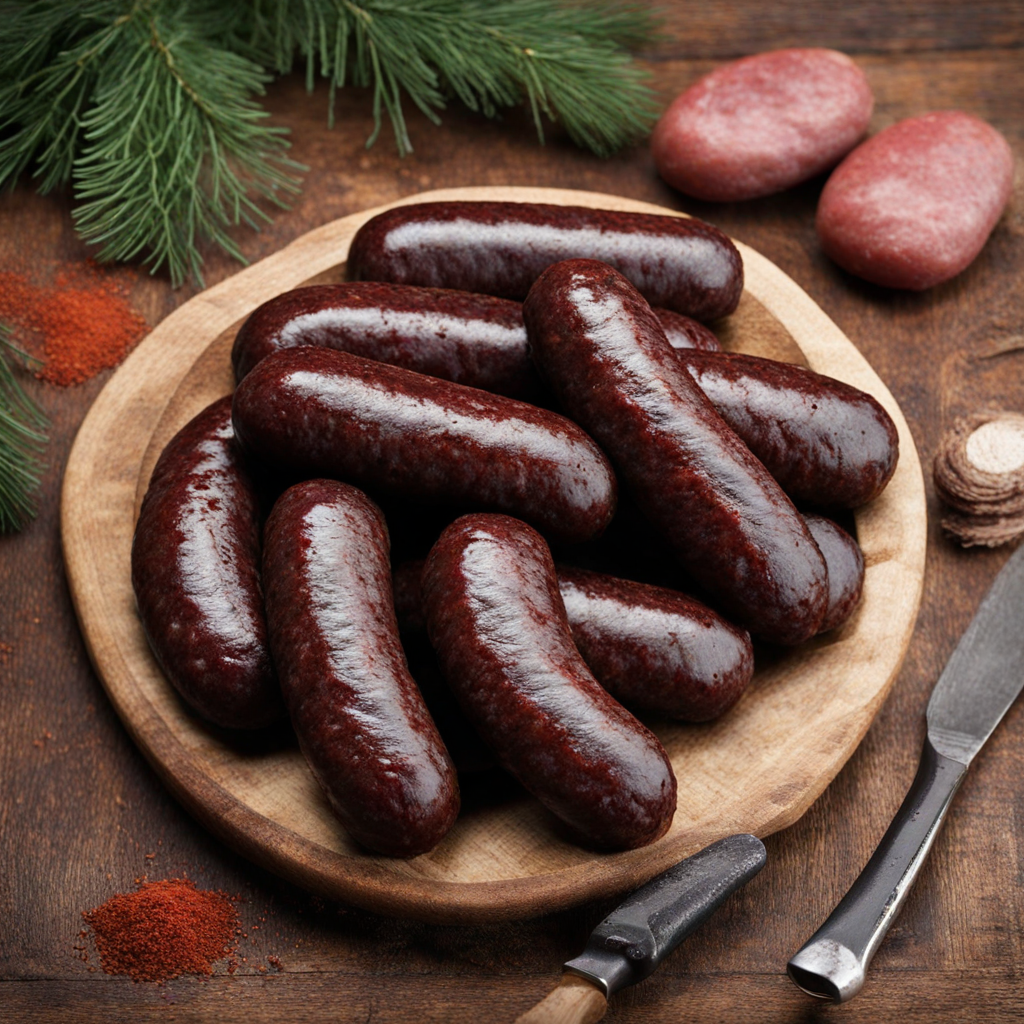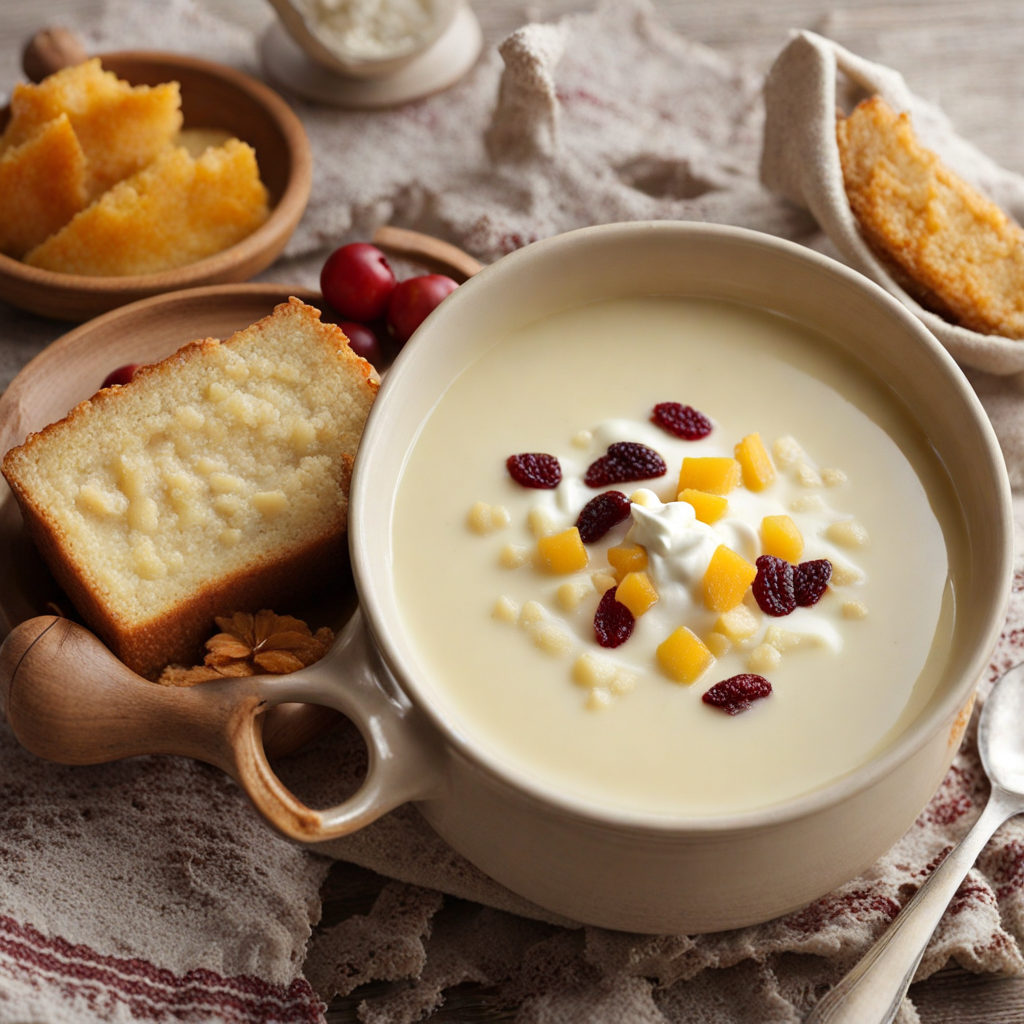Kefir
Kefir is a traditional fermented dairy product that originates from the Caucasus region but has found a special place in Latvian cuisine. This creamy beverage is made by inoculating milk with kefir grains, which are a combination of bacteria and yeasts. The result is a tangy, slightly effervescent drink that boasts a unique flavor profile, balancing between sour and mildly sweet notes. Its texture is smooth and creamy, making it a delightful addition to breakfast, whether enjoyed on its own, poured over granola, or blended into smoothies. The fermentation process not only imparts a distinctive taste to kefir but also enhances its nutritional value. Rich in probiotics, vitamins, and minerals, this drink supports gut health and boosts the immune system. In Latvia, kefir is often enjoyed as a refreshing beverage, especially in the summer months, but it can also be used in various dishes. From savory soups to hearty pancakes, kefir adds a delightful tang that elevates the overall flavor, making it a versatile ingredient in the kitchen. One of the most beloved ways to enjoy kefir in Latvia is by incorporating it into traditional recipes. Latvians often use it to create light and fluffy pancakes known as "kefīra pankūkas" or mix it into salads for an extra zesty kick. Additionally, kefir can be combined with herbs and spices to create a delicious dressing or dip, perfect for pairing with fresh vegetables or bread. With its rich cultural heritage and myriad culinary uses, kefir offers a fascinating taste experience that invites food lovers to explore the depths of Latvian gastronomy.
How It Became This Dish
The origins of Kefīrs can be traced back to the Caucasus region, where fermented milk products have been a staple for centuries. As fermentation techniques spread across Europe, Kefīrs made their way to the Baltic states, particularly Latvia, in the early 20th century. The term "kefir" is derived from the Turkish word "keif," which means "good feeling," reflecting the positive health benefits attributed to this probiotic-rich drink. In Latvia, kefīrs quickly became a part of daily life, cherished for its creamy texture and tangy flavor. Kefīrs are traditionally made from cow's milk, goat's milk, or sheep's milk, and are produced using kefir grains—small, gelatinous clusters of bacteria and yeast. These grains ferment the milk, resulting in a drink that is not only rich in flavor but also loaded with beneficial probiotics. The fermentation process typically takes 24 hours, during which the kefir grains multiply, allowing for continuous production. This self-sustaining cycle made kefīrs an accessible and economical food source for Latvians, especially in rural areas. The cultural significance of Kefīrs in Latvia cannot be overstated. It represents a connection to the land and the agricultural practices that have sustained the Latvian people for generations. Traditionally, kefīrs were consumed as a refreshing beverage, often enjoyed with rye bread or used as a base for soups and sauces. The drink is also an important part of Latvian national identity, symbolizing the resilience and resourcefulness of its people, especially during periods of hardship. In the early 20th century, as Latvia sought to establish its national identity following independence from Russia, traditional foods like kefīrs were embraced as symbols of cultural heritage. Festivals celebrating Latvian cuisine often included kefīrs in their offerings, highlighting its importance in the daily lives of Latvians. The drink became synonymous with home cooking, with families passing down recipes and fermentation techniques through generations. As Latvia underwent significant political and social changes throughout the 20th century, the production and consumption of Kefīrs evolved as well. During the Soviet era, the emphasis on collectivization and industrialization led to the establishment of large dairy farms and factories that mass-produced kefīrs. While this made the drink more widely available, it also led to a decline in traditional fermentation practices. Many families turned to store-bought options, which often contained additives and lacked the distinct flavors of homemade kefīrs. The fall of the Soviet Union in the early 1990s marked a resurgence of interest in traditional foods and local production methods. As Latvia embraced its independence and began to celebrate its cultural heritage, there was a renewed appreciation for homemade kefīrs. Small-scale dairies and artisan producers emerged, focusing on quality and traditional fermentation techniques. This revival was not just about preserving history; it was also linked to the growing global interest in health and wellness, as kefīrs were recognized for their probiotic benefits. Today, Kefīrs hold a prominent place in Latvian cuisine and continue to be a symbol of national pride. They are enjoyed in various forms—plain, flavored with fruits, or used in cooking. The growth of organic farming and a focus on sustainable practices have led to an increase in demand for artisanal kefīrs. Moreover, the drink has found its way into international markets, appealing to health-conscious consumers seeking natural probiotic options. Latvian kefīrs are also often included in traditional dishes, such as skābputra (sour porridge) and kefīra maizītes (kefir pancakes), showcasing its versatility in the kitchen. The drink is commonly consumed as a refreshing beverage during the hot summer months, served chilled alongside meals. Its tangy flavor complements a variety of foods, making it a beloved staple in Latvian households. The cultural rituals surrounding kefīrs have also evolved over time. In contemporary Latvia, kefīrs are often celebrated in festivals and culinary events, where local producers showcase their unique recipes and fermentation methods. Workshops on how to make kefīrs at home have gained popularity, encouraging a new generation to reconnect with their culinary roots. This blend of tradition and innovation has helped kefīrs remain relevant and cherished in Latvian culture. Furthermore, the health benefits associated with Kefīrs have been a significant factor in its continued popularity. Rich in vitamins, minerals, and probiotics, kefīrs are praised for their digestive health properties and immune-boosting capabilities. As the world becomes increasingly health-conscious, the demand for natural and fermented foods has surged, placing kefīrs at the forefront of dietary trends. In conclusion, the journey of Kefīrs in Latvia reflects a rich tapestry of history, culture, and resilience. From its humble beginnings in the Caucasus to its status as a beloved staple in Latvian households, kefīrs embody the spirit of a nation that values its culinary heritage. As it continues to adapt and thrive in modern society, kefīrs remain a testament to the enduring connection between food, culture, and identity in Latvia.
You may like
Discover local flavors from Latvia


